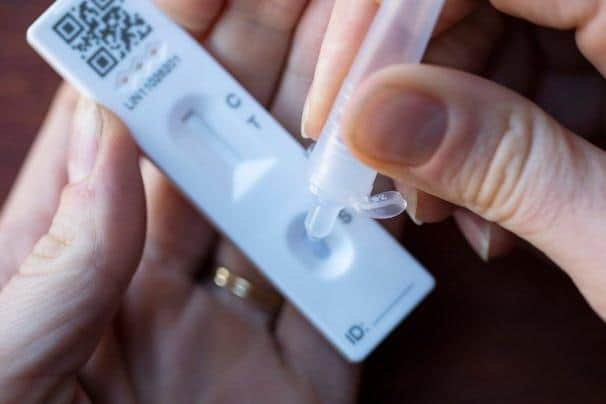Covid: Lancaster positivity rate hits record high as we reveal neighbourhoods with biggest case rate rises in a week
and live on Freeview channel 276
The positivity rate of 25.1 per cent in the week leading up to December 24 placed Lancaster as the region with the 67th highest rate in England.
The district's previous highest rate came in the previous rolling seven days, and was 22.2 per cent.
Advertisement
Hide AdAdvertisement
Hide AdA year earlier, the positivity rate for Lancaster was 8.2 per cent.


Meanwhile, government data shows that the Morecambe Westgate area saw its Covid rate rise from 257.5 to 1,120.7 per 100,000 people in the seven days to December 23 - a leap of 335.2 per cent compared to a week earlier.
And Bare was not far behind, with an increase of 329.4 per cent from 322.1 to 1,383.1 cases per 100,000 over the same week.
However, it is Lancaster East with the highest number of cases per 100,000 in the district, at 1,418.7, with Scale Hall & Torrisholme just behind at 1,413.2.
Advertisement
Hide AdAdvertisement
Hide AdLowest is Marsh, Haverbreaks & Scotforth West, with a 61.2 per cent increase from 614.4 to 990.4 cases per 100,000.
Overall, Lancaster's case rate has increased by 122.8 per cent from 517.8 to 1,153.8 per 100,000.
These latest figures place Lancaster seventh in England for the local authority with the fastest rising case rate.
The increased transmissibility of the Omicron variant is likely to account for such significant increases.
The figures show:
Neighbourhood
Rate of cases per 100,000, week to December 16
Rate of cases per 100,000, week to December 23
% change
Advertisement
Hide AdAdvertisement
Hide AdLocal authority rank by change in case rate (1= neighbourhood with fastest rising case rate in local authority)
Rank by highest latest figures (1= highest case rates in local authority)
Scotforth East & Bowerham: 622.8; 1296.1; 108.1%; 13; 7
Lancaster Central: 538.7; 1260.3; 134.0%; 7; 9
Lancaster East: 494.6; 1418.7; 186.8%; 4; 1
Halton & Caton: 793; 1396.3; 76.1%; 16; 3
Kellet & Lune Valley: 372; 825.0; 121.8%; 9; 16
Marsh, Haverbreaks & Scotforth West: 614.4; 990.4; 61.2%; 18; 13
Moorlands & Greaves: 594; 1336.4; 125.0%; 8; 6
Morecambe West End: 372.8; 948.8; 154.5%; 5; 14
Bare: 322.1; 1383.1; 329.4%; 2; 5
Skerton & Vale: 729.8; 1265.1; 73.3%; 17; 8
Morecambe Westgate: 257.5; 1120.7; 335.2%; 1; 11
Morecambe Town: 312.7; 775.4; 148.0%; 6; 17
Carnforth, Silverdale & Warton: 470.7; 831.2; 76.6%; 15; 15
Advertisement
Hide AdAdvertisement
Hide AdUniversity, Galgate & Dolphinholme: 653.5; 1385.8; 112.1%; 12; 4
Heysham & Overton: 533.8; 1053.1; 97.3%; 14; 12
Scale Hall & Torrisholme: 652.2; 1413.2; 116.7%; 11; 2
Morecambe South West: 346.9; 759.8; 119.0%; 10; 18
Hest Bank & Bolton-le-Sands: 321.9; 1245.6; 287.0%; 3; 10
Comment Guidelines
National World encourages reader discussion on our stories. User feedback, insights and back-and-forth exchanges add a rich layer of context to reporting. Please review our Community Guidelines before commenting.